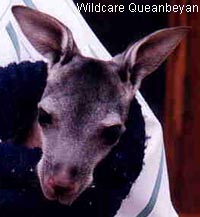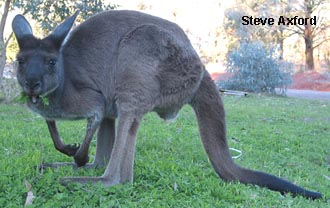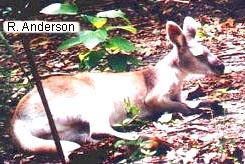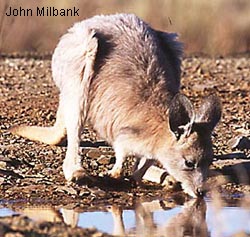Tema: Re: euro
Data: 2010-11-25 01:52:48
<!DOCTYPE HTML PUBLIC "-//W3C//DTD HTML 4.01 Transitional//EN">
<html>
<head>
<meta content="text/html; charset=UTF-8" http-equiv="Content-Type">
<title></title>
</head>
<body bgcolor="#ffff99" text="#000099">
<big><big><a class="moz-txt-link-freetext" href="http://australian-animals.net/wallaroo.htm">http://australian-animals.net/wallaroo.htm</a><br>
<br>
</big></big>
<h1>
<center><b><font color="#800000">WALLAROO (Euro) </font></b><img
src="cid:part1.03080501.06000808@hotmail.com" width="32"
height="32"></center>
</h1>
<a href="http://www.afrigalah.com/"><img
src="cid:part2.00020602.04060504@hotmail.com" alt="click for
info on pic" width="300" align="right" border="2" height="251"
hspace="10"></a>
<h2><font color="#800000">Is a Wallaroo a Kangaroo ?</font></h2>
<center>
<h2>NO</h2>
</center>
<h3>
There are 4 main types of "Kangaroo like" animals<br>
1) <a href="http://users.tpg.com.au/readmana/red.htm">Red
Kangaroo</a> <br>
2) Grey Kangaroo <br>
3) Wallaby <br>
4) Wallaroo (Euro)<br>
<br>
These are all mammals, and are termed marsupials because they keep
their young in a pouch
They are the only vertrabrate animal over 5 kg to HOP
<br>
<br>
<font color="#800000">Common Wallaroo or Euro</font>
<br>
In eastern Australia it is a grey animal and is called the Common
Wallaroo, (1/2 way between a WALLaby and a kangAROO in size)<br>
In central and western Australia it is reddish, lives in hot, arid
regions and is known as the Euro.<br>
But essentially they are the same animal.<br>
The above statement is a non-scientific generalisation as their
are many species & sub species of Wallaroos<br>
<br>
<br>
<a href="http://www.wildcare.com.au/"><img
src="cid:part3.00090306.01090603@hotmail.com" alt="click for
info on pic" width="200" align="left" border="2" height="217"
hspace="10"></a>
<a href="http://community.webshots.com/user/steveaxford"><img
src="cid:part4.08030900.01070205@hotmail.com" alt="click for
info on pic" width="330" align="right" border="2" height="208"
hspace="10"></a>
<font color="#800000">Description</font><br>
Wallaroos have bare muzzles and relatively large ears<br>
Head and body: 55-110cm<br>
Tail: 53-90cm<br>
Male Wallaroos are as much as twice the weight of females (Males
up to 40 -50 Kilograms).<br>
the Infant born to a Wallaroo is called a Joey<br>
Wallaroos are quiet animals using foot thumping to warn each other
of danger, When annoyed they may
"hiss or cough".<br>
<br>
<center><font color="#800000">Habits</font></center>
<a href="http://www.richardanderson.org/photos/australia.html"><img
src="cid:part5.09060704.02070301@hotmail.com" alt="click for
info on pic" width="245" align="left" border="2" height="164"
hspace="10"></a>
The Wallaroo is a solitary animal, preferring its own company<br>
During the day the Wallaroo sleeps a in shelter, usually under a
rock overhang on a rock strewn slope or in a cave on the upper
parts of an escarpment.<br>
At night the Wallaroo descends to graze on more level ground, such
diverse areas from forest to arid tussock grassland, to the edge
of plains.<br>
Because of this habit, the damage it sometimes causes to crops or
pastures is often blamed on plains-dwelling kangaroos.) The
Wallaroo will stay in its own home range which is fairly small
(usually 2-3 km radius)Wallaroos have bare muzzles and relatively
large ears
<br>
<br>
<br>
<a href="http://www.afrigalah.com/"><img
src="cid:part6.03050807.08040905@hotmail.com" alt="click for
info on pic" width="250" align="right" border="2" height="237"
hspace="10"></a>
<font color="#800000">Dry Spell Habits</font>
<br>
In dry spells,the Wallaroo can survive obtaining all necessary
water <br>
from its food, so long as moisture bearing food is available. <br>
By staying in caves during the day energy is conserved<br>
Their loss of water is similar to a camel only 2-4 % of their <br>
body weight per day<br>
Wallaroos also breed less when conditions are harsh, and unlike
the Kangaroo will stay put and "tough it out" in severe droughts<br>
<br>
<br>
<font color="#800000">Breeding</font><br>
Sexual maturity is reached between 18 and 24 months. <br>
Wallaroos breed through out the year. <br>
A single young Wallaroo is born, a hairless creature the size of a
<br>
peanut which crawls up to the mothers pouch, burrows inside and
attaches itself to a teat. <br>
The infant Wallaroo can stay up to a year in its mothers pouch</h3>
<br>
<big><big><br>
</big></big><br>
On 2010.11.24 08:47, Romas Z. wrote:
<blockquote cite="mid:ichcpf$h2a$1@trimpas.omnitel.net" type="cite">Latviai
sako "eiro", bet jiems tai draudžiama ;)
<br>
<br>
Bulgarai norėjo ant euro banknotų matyti užrašą kirilica (graikams
tai leido), bet jiems parodė špygą.
<br>
<br>
<br>
Visur politika.
<br>
<br>
<br>
<br>
<br>
"AS" wrote in message <a class="moz-txt-link-freetext" href="news:ich949$c7m$1@trimpas.omnitel.net">news:ich949$c7m$1@trimpas.omnitel.net</a>...
<br>
<br>
<br>
"Romas Z." <a class="moz-txt-link-rfc2396E" href="mailto:romas@z.lt"><romas@z.lt></a> wrote in message
<br>
<a class="moz-txt-link-freetext" href="news:icgvnt$vhj$1@trimpas.omnitel.net">news:icgvnt$vhj$1@trimpas.omnitel.net</a>...
<br>
<blockquote type="cite">Tai kad visi sako "a hundred euros".
<br>
<br>
O raso (oficialiai) "EUR 10,000", par example: "Total budget
amounted to EUR 10,123.12".
<br>
<br>
</blockquote>
<br>
<br>
Visi sako "eurai", bet pagal tuos pacius standartus draudziama.
Tai ir
<br>
suprask galu gale...
<br>
<br>
</blockquote>
<br>
</body>
</html>






3Dastronomyagricultureaudioautosautos.audiautos.audioautos.binariesautos.bmwautos.clubautos.fordautos.hondacrxautos.japanautos.mercedesautos.opelautos.sportautos.volvoautos.vwaviaavia.binariesbankcardsbinariesbooksbuildingcinemacommercecomp.hardwarecomp.softwarecomp.lietuvinimascomp.networksculturedarbas.ieskaudarbas.siulaudesigneconomicselectronicsfaunafauna.aquafauna.binariesfishingflorafotofoto.binariesgamesgames.csgames.onlinegsmgurmanaihumourhumour.binariesinternetlawmicrosoftmotomusicmusic.binariesmusic.instrumentsmusic.LT.binariesnavigacijaphppoliticsprogrammingrpgsportstudyingsveikatatalktesttranslationtransportationtraveltravel.binariestvunixvideovideo.binarieswatersportswwwwww.flashpdaautos.supermama.ltmobile